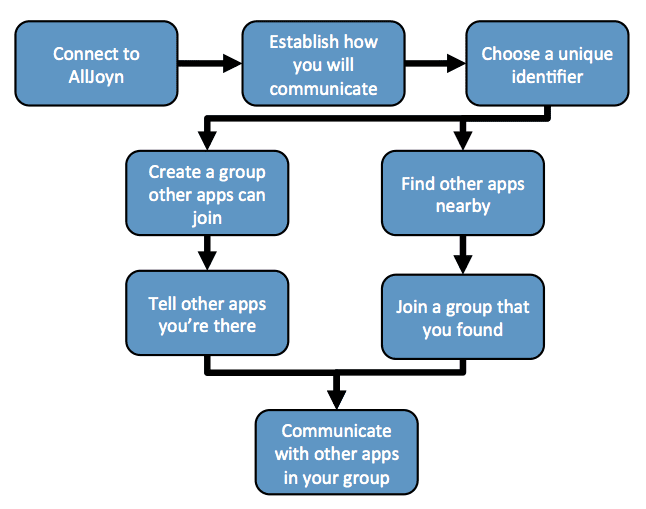TiECon 2014 Summary-Part 3: Highlights of Qualcomm’s Keynote -Proximity’s Role in the Internet of Everything (IoE)
Introduction:
Cloud-based services have already evolved to support the Internet of Everything1 (IoE). But what about use cases in which no roundtrip to a server in the Cloud is called for? What about the “Internet of Things near or close to me”?
Rob Chandhok, SVP of Qualcomm Technologies Inc. and President of Qualcomm Interactive Platforms, discussed IoE use cases for direct peer connection and communication among devices and apps that are physically near the user. Proximal networking, in which the Cloud is accessed only when it makes sense and only by one member of the network, opens up a vast array of new possibilities for developers, entrepreneurs, and brands alike.
Rob is responsible for Qualcomm strategies that address how people can take advantage of and benefit from the Internet of Everything, wearable computing and augmented reality as Qualcomm drives the next level of user experience in a massively interconnected and mobile-centric world.
Note 1. Qualcomm doesn’t seem to distinguish between the Internet of Things (IoT) and the Internet of Everything (IoE) as per this article. Qualcomm states on its IoE web page:
“When smart things everywhere are connected together, we will be able to do more and be more. This is the Internet of Everything (IoE), a paradigm shift that marks a new era of opportunity for everyone, from consumers and businesses to cities and governments….”
“Qualcomm is creating the fabric of IoE for everyone everywhere to enable this Digital Sixth Sense.”
Presentation:
The Internet of Everything (IoE) is already here and it will get a whole lot bigger. There’s been a massive surge in connected things that’s already begun. Gartner Group (and others) have forecast 25B permanently connected things by 2020. Over half of those connected devices will be non-handsets, such as lights, speakers, security cameras, plug-in electric vehicles, and various types of home/industrial appliances.
There’ll be new connections, new device capabilities and enhanced user experiences. That translates into awareness (capturing data about you and your environment), connectivity (exchanging information to/from the cloud), and interactivity (relevant, seamless information and control). Physical layer protocols (e.g. WiFi, Zigbee, Blue Tooth, 3G/4G) for wireless connected devices should be able to change without changing the software/firmware in them.
Today, IoE is cloud based and fragmented, with different cloud systems for each type of appliance, e.g. speakers, TV, refrigerators, washing machines, etc. This author believes this has to change if IoE is to realize its potential and be a huge market (or industry vertical markets).
A successful IoT architecture will be more complex than client/server computing. A heterogeneous IoE will bring many challenges, including: discovery, identity, adaptation, manage, interoperate, exchange information and services, security, and privacy. Let’s take identity as an example. It includes such capabilities as determing what servers are nearby, what interfaces and APIs are available for the devices along with other attributes. Security involves eliminating attacks and thwarting bad actors from the public Internet.
IoE “near me,” is a dynamic subset of the IoE that involves proximity. Towards that end, an open source software platform called AllJoyn, https://www.alljoyn.org/ was created to provide a meaningful interaction between smart things via a common language. AllJoyn was initially developed by Qualcomm Innovation Center, Inc. and is now a collaborative open source project of the AllSeen Alliance, It gives manufacturers and developers the tools they need to invent new ways for smart things to work together.
AllJoyn was said to facilitate and/or provide: an open connectivity framework over both wireless and wire-line networks, interoperability between connected devices/things, core services as basic building blocks, and an ecosystem that addresses many vertical industry use cases.
Web APIs offer developers access to web service capabilities -from virtual objects to physical things. AllJoyn APIs give developers access to the capabilities of smart devices/things. They are also building blocks to access system resources. An objective is to make AllJoyn the lingua franca of the IoE, analagous to the role of HTTP for the world wide web.
Going forward, innovation will be crticially important for the IoE and “Proximal Networking.” It’s a “green field rich in opportunity for entrepreneurs with vision,” according to Rob.
References:
What it is: https://www.alljoyn.org/about
Documentation and guides – https://allseenalliance.org/developerresources/alljoyn/docsdownloads
General Info and FAQs – https://allseenallianceorg/developer resources/faqs
AllJoyn SDKs – https://www.alljoyn.org/docs-and-downloads
An AllJoyn tutorial is available once a developer establishes an on line account at: https://www.alljoyn.org/user/register
Post-TiECON Research – Basics of AllJoyn:
Every AllJoyn application requires a BusAttachment to attach to the Bus in order to advertise, discover, and communicate with other applications. The BusAttachment is the gateway (between a developer’s application and other applications) that handles all of the lower-level networking stacks. It provides a basis for several processes one develop in their application.
Most applications will have only one BusAttachment in which they use to interact with the AllJoyn API calls.
Other processes that every AllJoyn application must follow include:
•Advertise and/or Discovery
•Create a bus interface and bus object
•Create and join sessions
•Interact over the interface
AllJoyn application process
Figure 1 below illustrates the workflow process to build an AllJoyn application. The first three steps form the basis for the remaining steps in the process

Figure 1. AllJoyn application workflow


